01:55
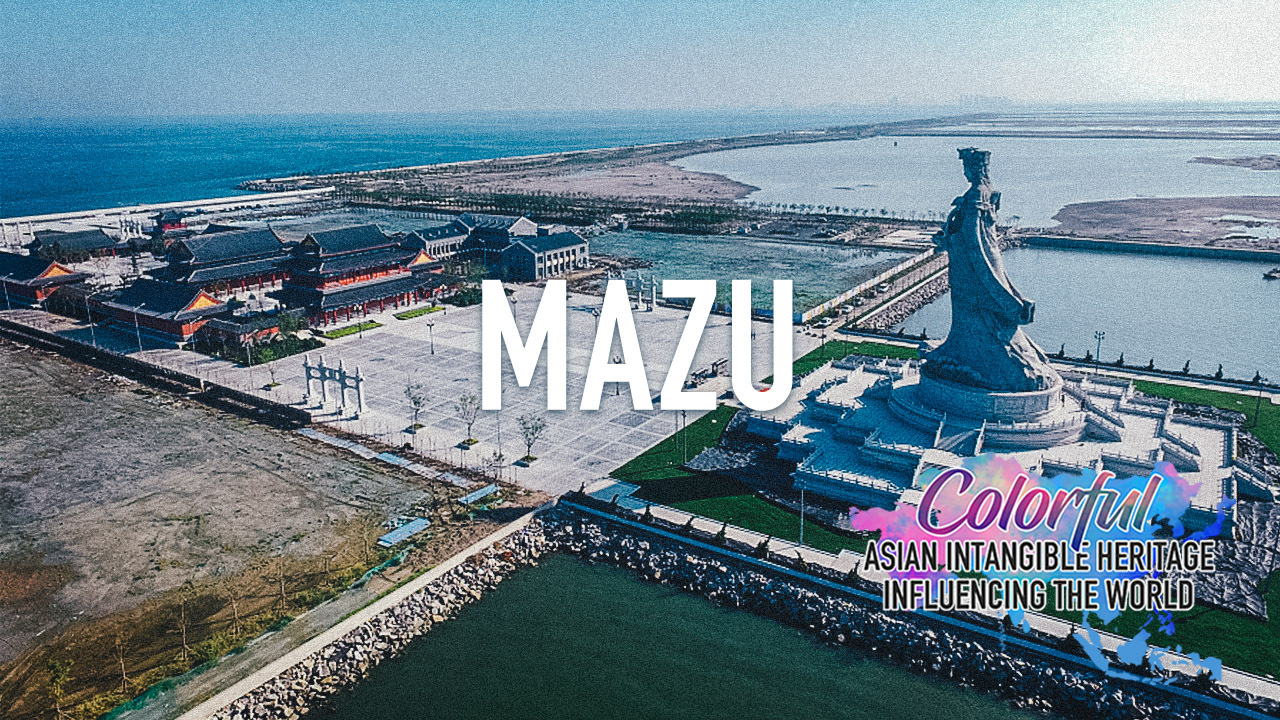
With approximately 14,500 kilometers of coastline and naval history spanning thousands of years, China has its own sea gods in its pantheon. Among them, Mazu counts as one of the most influential. The legendary goddess of the sea is deeply rooted in China's rich maritime culture.
Viewed as the navigation guardian goddess in China, Mazu, also popularly known as "Tianfei" (Princess of Heaven) and "Tianhou" (Empress of Heaven), is at the heart of beliefs and customs prevalent in the country's coastal areas.
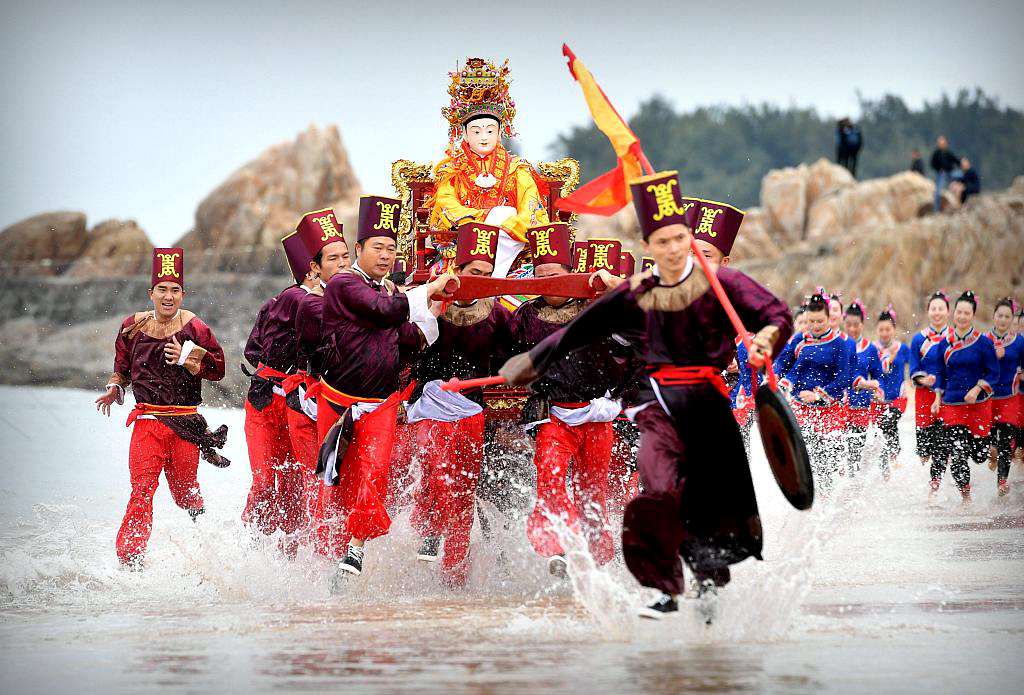
People carry the sculpture of Mazu and run on the beach – a practice referring to the tour of Mazu that brings peace and fortune to the coastal town and its people in Xiapu County in southeast China's Fujian Province, October 17, 2017. /VCG Photo
People carry the sculpture of Mazu and run on the beach – a practice referring to the tour of Mazu that brings peace and fortune to the coastal town and its people in Xiapu County in southeast China's Fujian Province, October 17, 2017. /VCG Photo
In Hong Kong, she is called "Tin Hau," which means the Heavenly Empress in Cantonese. The name of Macao is derived from the word "magao," referring to the shrines dedicated to Mazu.
Taipei's Lugang Tianhou Temple in China's Taiwan is the most renowned among over 1,000 Mazu temples in the island region that serve about 17 million Mazu devotees, more than two-thirds of the population on the island.
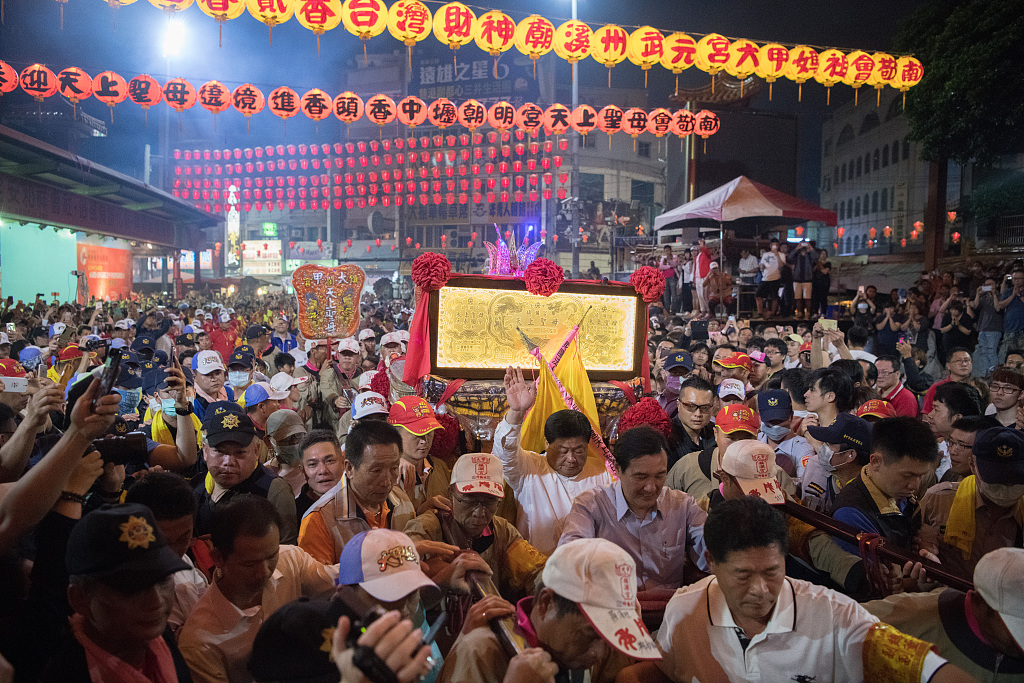
Pilgrims carry a sedan chair holding a statue of Mazu as they approach Jenn Lann Temple on the final day of the nine-day pilgrimage in Dajia near Taichung City in Taiwan, China, April 22, 2018. /VCG Photo
Pilgrims carry a sedan chair holding a statue of Mazu as they approach Jenn Lann Temple on the final day of the nine-day pilgrimage in Dajia near Taichung City in Taiwan, China, April 22, 2018. /VCG Photo
Mazu belief and customs, inscribed on the Representative List of the Intangible Cultural Heritage of Humanity by UNESCO on September 30, 2009, primarily contains three parts – sacrificial and worship ceremonies, folk customs and folk tales, which have been deeply integrated into the lives of coastal Chinese and many Chinese communities around the world.
Guardian of seafarers deified in ancient times
It is universally believed that Mazu was born as a kindhearted maiden named Lin Mo (or Lin Moniang) in a small fishing village on Meizhou Island, in Fujian Province on the 23rd day of the third lunar month in 960.

A comic illustration depicts Mazu as the guardian of seafarers. /VCG Photo
A comic illustration depicts Mazu as the guardian of seafarers. /VCG Photo
There are many variations to the legends around her death and deification. The most frequently-told story reads that she sacrificed her life to save fellow town people who met with a thunderstorm while fishing out at sea.
Local residents thus built a temple and created statues in honor of the virtuous and kind woman and worshiped her like a goddess – a holy symbol of mercy, kindness and compassion.
People living in the coastal areas, especially those who make their living on the South China Sea, such as fishermen and sailors, venerate her as the guardian capable of protecting them from the storms and other water-related calamities.
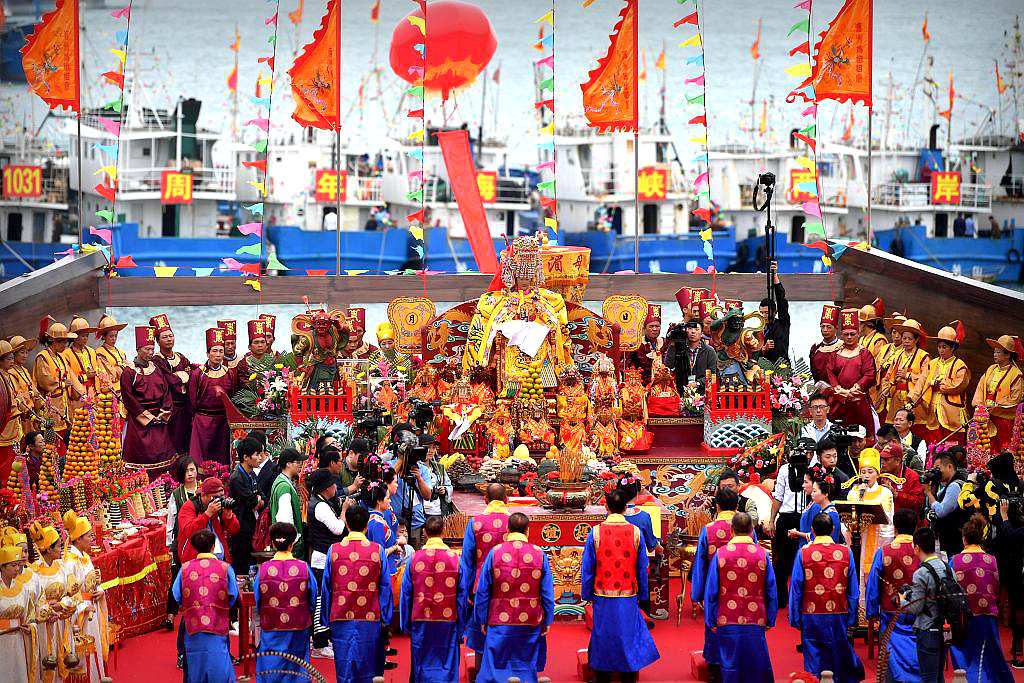
People worship by the sea for Mazu's death anniversary on the 9th day of the ninth lunar month on Meizhou Island, Fujian Province, October 17, 2018. /VCG Photo
People worship by the sea for Mazu's death anniversary on the 9th day of the ninth lunar month on Meizhou Island, Fujian Province, October 17, 2018. /VCG Photo
They hold worship ceremonies and offer sacrifices as a tribute to her and pray to statues of her for a safe voyage and a peaceful life.
As maritime activities and trades flourished along the Maritime Silk Road, worshiping Mazu, which originated in a small island of south China, has been widespread all over the world by Chinese seafarers, immigrants, and ambassadors.
More than 10,000 temples devoted to Mazu are dotted in 40 countries and regions while there are over 300 million believers, countless veneration practices and commemoration events worldwide.
Powerful cultural bond in the new era
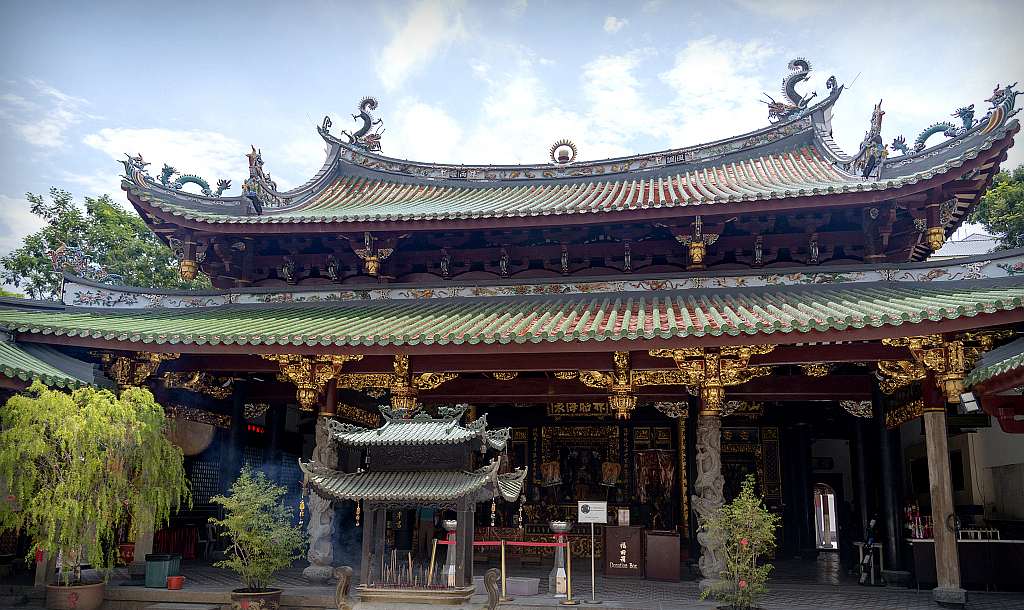
Thian Hock Keng, established in 1840, is a renowned Mazu temple located in Singapore. /VCG Photo
Thian Hock Keng, established in 1840, is a renowned Mazu temple located in Singapore. /VCG Photo
Thanks to advanced navigational technologies and better living conditions, coastal people and seafarers, nowadays, can defend themselves from the ever-changing environments and climates of the ocean.
Mazu beliefs and customs, however, are still widely observed as it has become a strong bond among the Chinese communities, which boosts the concord of family and society, strengthens the social identity of the communities, and promotes the cultural exchanges between different countries and regions, especially those along the Maritime Silk Road.
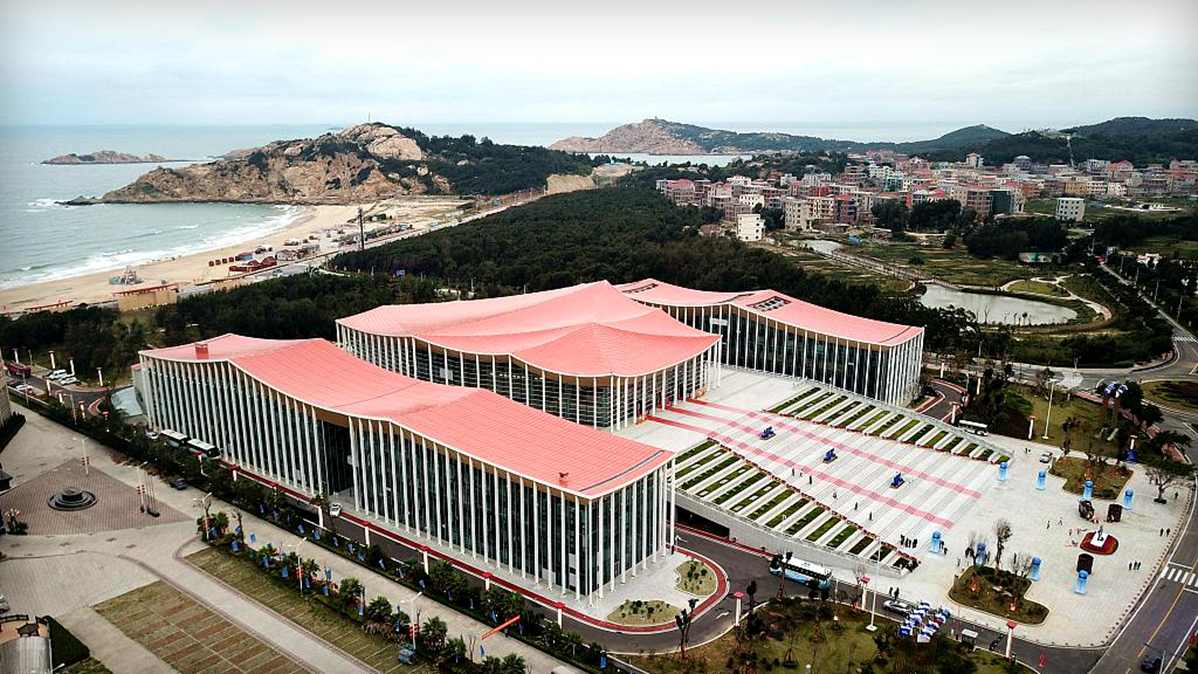
The International Mazu Culture Forum Permanent Venue on Meizhou Island, November 17, 2018. /VCG Photo
The International Mazu Culture Forum Permanent Venue on Meizhou Island, November 17, 2018. /VCG Photo
The Meizhou Mazu Cultural Tourism Festival, launched in 1998, is annually staged on the sea goddess' hometown, drawing thousands of devotees from over 20 countries to participate in the grand opening ceremony. Also at the goddess' birthplace is the permanent venue of the annual International Mazu Culture Forum, which was established in 2017.
The Mazu Ancestral Temple in Meizhou, which is universally regarded as the original temple of all other Mazu temples across the globe, receives more than four million pilgrims each year, including massive overseas visitors. More than one hundred groups of people from Southeast Asia make the pilgrimage to Meizhou throughout a year.
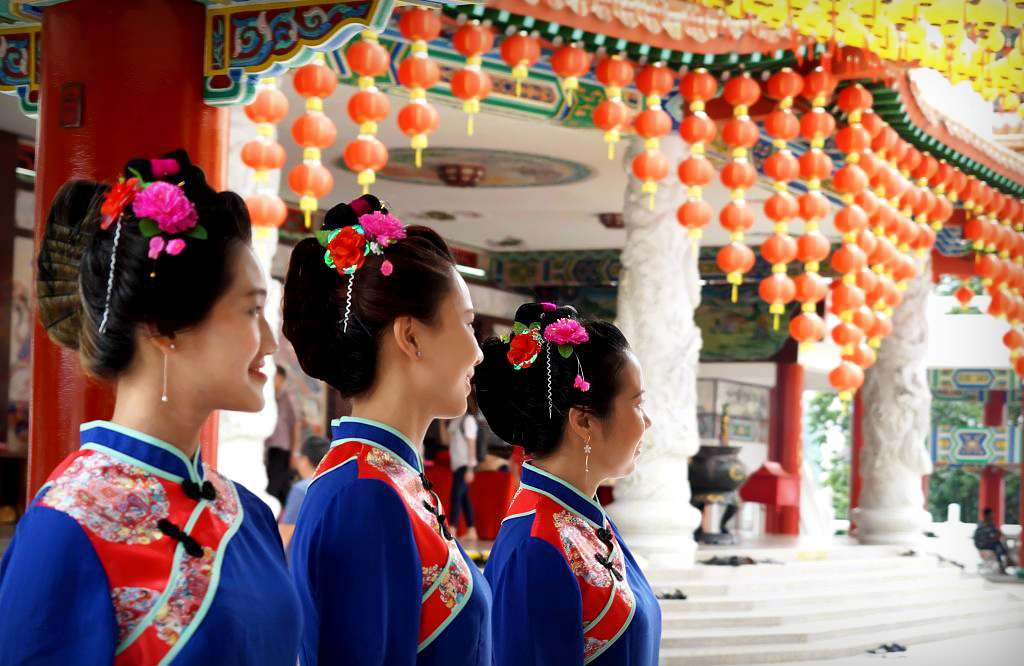
Malaysian Chinese girls dress themselves up with Mazu's signature hairstyle and in traditional costumes to participate in Malaysian Mazu's tour event at Thean Hou Temple in Kuala Lumpur, Malaysia, April 22, 2019. /VCG Photo
Malaysian Chinese girls dress themselves up with Mazu's signature hairstyle and in traditional costumes to participate in Malaysian Mazu's tour event at Thean Hou Temple in Kuala Lumpur, Malaysia, April 22, 2019. /VCG Photo
Worship of Mazu is overwhelmingly popular in Southeast Asian countries, where there are a massive number of Chinese immigrants, and most of them are descendants of the coastal Chinese from southern Fujian and Guangdong provinces.
There are more than 150 Mazu temples and cultural institutes in Malaysia. Nearly 160 Mazu temples are built in the Philippines and over 50 located in Singapore.
In 2017, the original statue of Meizhou Mazu embarked on a two-week Southeast Asia tour for the first time, kicking of a series of pilgrimage and cruising events entitled "Mazu Tours to Nanyang (Southeast Asia) to Retrace the Maritime Silk Road," which featured grand worship ceremonies, sculpture parades, as well as a variety of dances and drama performances.
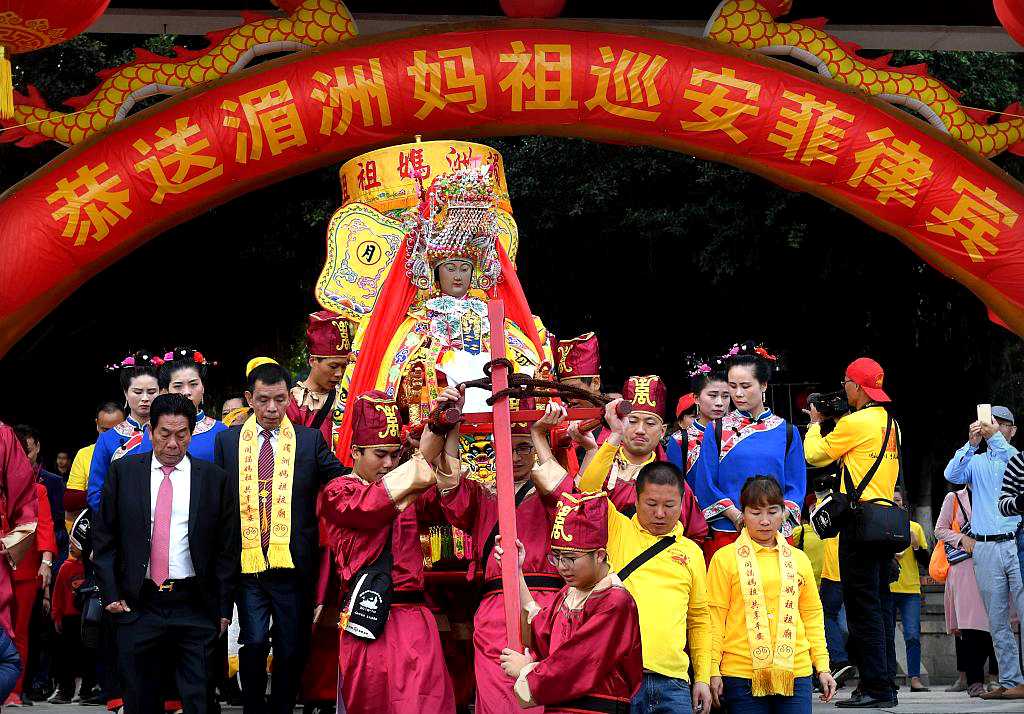
Meizhou Mazu Ancestral Temple draws over 2,300 worshipers during the memorial ceremonies, perform and chant prayers in honor of Mazu's six-day visit to the Philippines in Fujian, October 20, 2018. /VCG Photo
Meizhou Mazu Ancestral Temple draws over 2,300 worshipers during the memorial ceremonies, perform and chant prayers in honor of Mazu's six-day visit to the Philippines in Fujian, October 20, 2018. /VCG Photo
The holy trip to Kuala Lumpur and Malacca of Malaysia and Singapore attracted hundreds of thousands of local devotees, who scrambled to see the deity at the temples and venerated her sculpture, lighting incense and candles and offering floral tributes.
Last October, Meizhou Mazu again went on a six-day Southeast Asian cruise, arriving in the Philippines to bring her blessings to the local people. Thailand is reportedly to be the next destination of Meizhou Mazu's cruise, which is likely to take place this year.
Video editor: Wang Baozhu
Cover image designer: Fan Chenxiao
Producer: Wen Yaru
Chief editor: Lin Dongwei
Supervisor: Pang Xinhua










